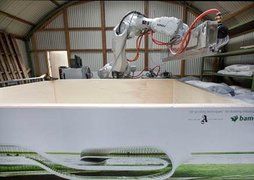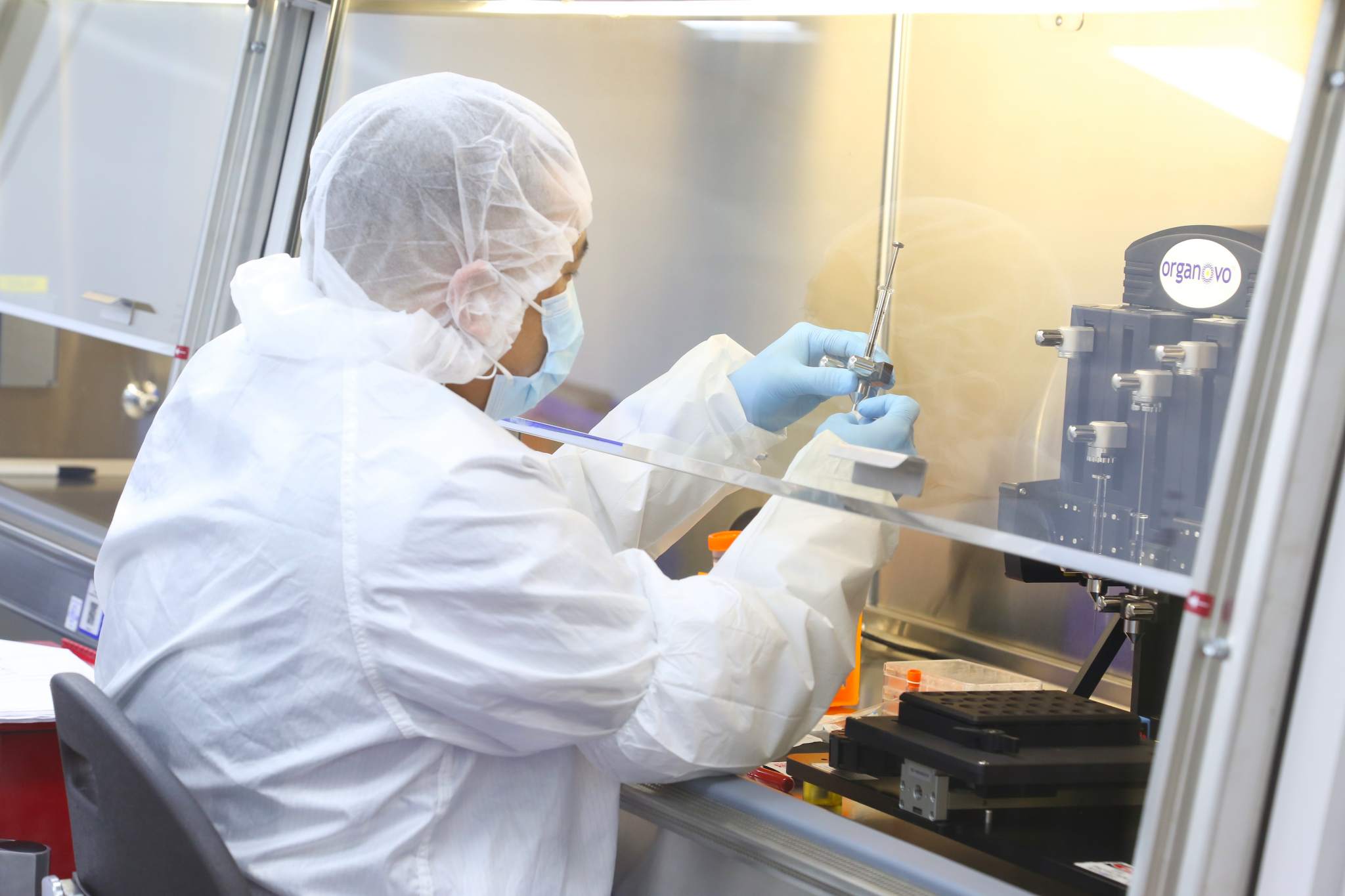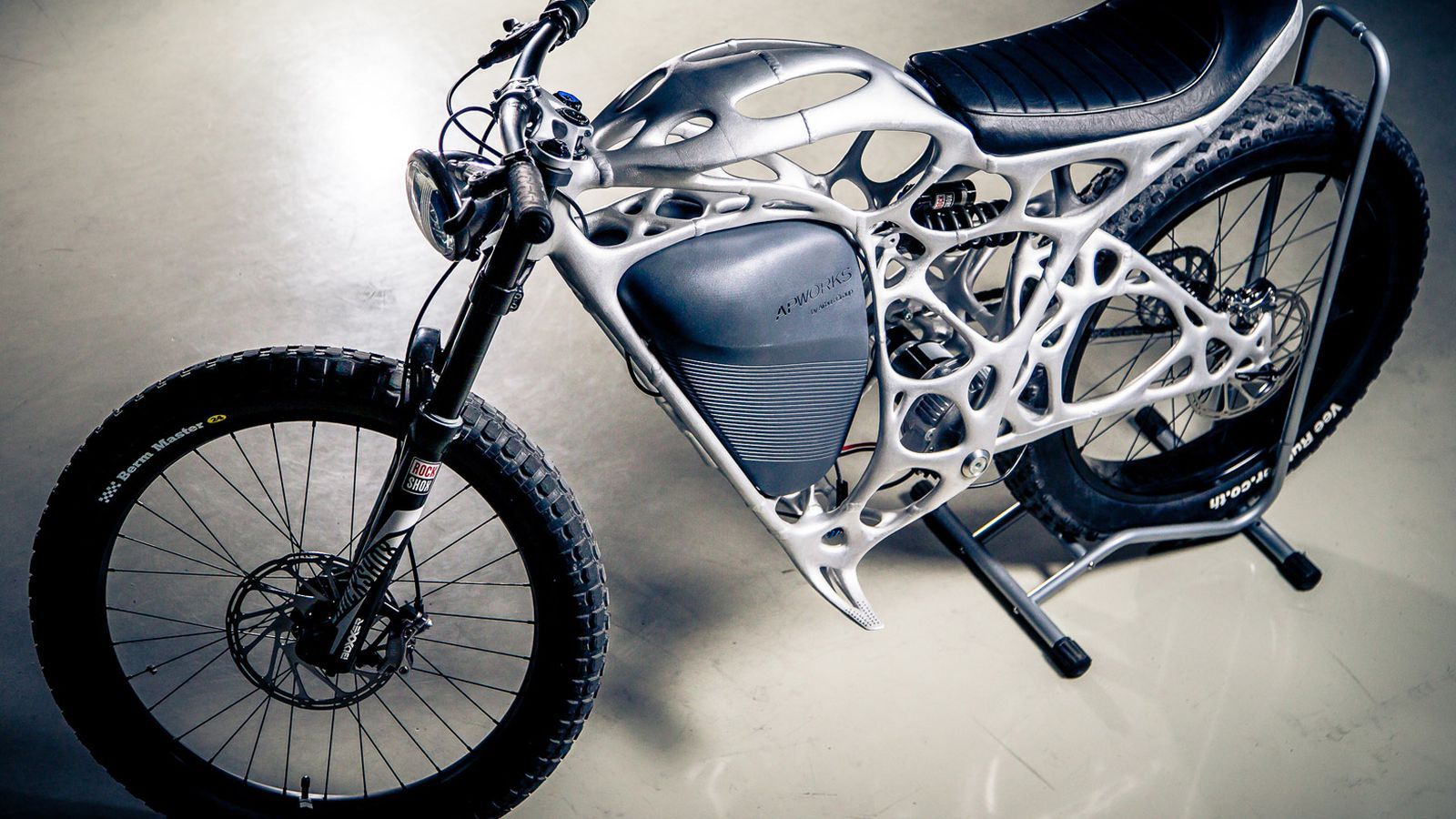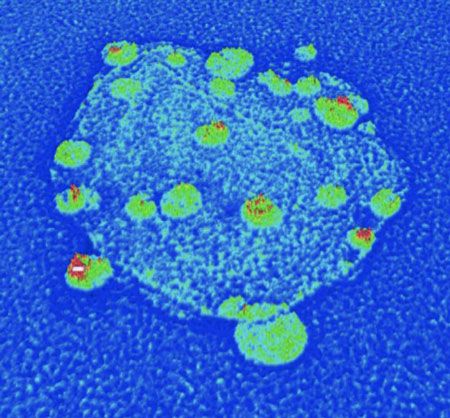BAM has teamed up with Universe Architecture to launch a ‘robo printer’ that can create free-form buildings in stone and concrete.
The ‘building machine’ is described as the first to link free-form print technology to automotive industry robotics. It is designed to make free-form architecture possible, as well as enable the creation of complex ornamental exteriors.
In 2013, architect Janjaap Ruijssenaars of Universe Architecture had plans for the creation of a building without beginning or end, Landscape House, using a 3D printer. The 3D Builder machine entered service yesterday and is starting with the construction of a 1:4 scale version of Landscape House at FabCity, a temporary sustainability campus in Amsterdam.









